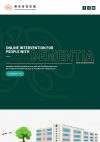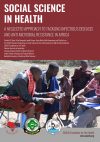Open Access Government discerns some of NHGRI’s work, part of the NIH in the U.S., concerning genomics research to benefit human health
National Institutes of Health (NIH) in the U.S. is the biggest agency for biomedical research globally, a part of the Department of Health and Human Services. NIH has an impressive 27 Centers and Institutes, each with a particular research theme concerning body systems or specific diseases. The National Human Genome Research Institute (NHGRI) is just one of the 27 parts of the NIH; established in 1989, they are committed to genome research to advance health. Let us briefly examine what a genome is plus about NHGRI.
Genomics research to benefit human health
How does one describe a genome? NHGRI concisely summarises: “Genome is a fancy word for all your DNA. From potatoes to puppies, all living organisms have their own genome. Each genome contains the information needed to build and maintain that organism throughout its life.” (1) NHGRI has a bold vision to better the health of humans through the power of genomics research. NHGRI’s mission is to speed up medical and scientific breakthroughs, something that is achievable, they explain by “driving cutting-edge research, developing new technologies, and studying the impact of genomics on society.”
Examples of NHGRI research
With the scene set, let us examine a few examples of NHGRI research. Many years ago, NIH researchers from NHGRI, the National Eye Institute (NEI) and those they work with found a new role for a gene called heat shock protein 60 (Hsp60), discerning that it is crucial for wound healing and tissue regeneration. “This gene is found in every organism from bacteria to man. We have shown that in vertebrates, it has a surprising role in immunity that is essential for wound healing,” Shawn Burgess, PhD from the NHGRI, commented.
More recently, researchers at the NIH released and developed “an innovative software tool to assemble truly complete (that is, gapless) genome sequences from a variety of species”, we hear. Verkko means “network” in Finnish. We discover that the software ensures the procedure to get together complete genome sequences becomes increasingly accessible and affordable. A description of the software was published in Nature Biotechnology. The software arose from assembling what NHGRI terms “the first gapless human genome sequence”, completed in 2022 by the collaborative NHGRI-funded project, the Telomere-to-Telomere (T2T) consortium. NHGRI Associate Investigator Sergey Koren, PhD, explains more about this exciting example of genomics research: “We took everything we learned in the T2T project and automated the process. Now with Verkko, we can essentially push a button and automatically get a complete genome sequence.” (2)
Looking ahead: Genomics research
So, we look forward to many more fascinating examples of U.S. research in the field of genomics to benefit human health in the future.
References
- https://www.genome.gov/About-Genomics/Introduction-to-Genomics
- https://www.genome.gov/news/news-release/nih-software-assembles-complete-genome-sequences-on-demand
Open Access Government
editorial@openaccessgovernment.org
www.openaccessgovernment.org
Editor's Recommended Articles
-
Must Read >> Can environmental genomics help to protect coral?




























